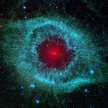Five Titbits of Information
Five of my short-form stories regarding the universe and life. Enjoy.

British spelling.
1/5
A big problem for life.
The early universe had too few elements for life as we know it to exist.
The universe burst into existence 13.8 billion years ago. 380,000 years later, the conditions were right for the first atoms to form, which were hydrogen, helium, and small amounts of lithium.
118 naturally occurring chemical elements exist in the universe.
The first stars formed roughly 100 million years after the universe's birth.
Now, the stage was set for more chemical elements to exist.
Stars manufacture atoms in a process called nuclear fusion, and some will fuse atoms up to iron. Gargantuan explosions at the end of some stars’ lives can manufacture heavier atoms.
The mass of the human body consists of mainly 11 chemical elements out of 92 found naturally on Earth.
<><><>
2/5
What is the purpose of your fingernails?

One of the reasons is to protect your fingertips and the surrounding soft tissues from injuries.
Fingernails are mostly made of keratin, the same material as claws, horns, and hooves in other animals.
A lot is happening in the nail roots, but the nails are dead once they emerge and can be seen.
That is obviously why it doesn't hurt when we cut them.
The hard surface of nails gives the pads of our fingers support when we grip on to something.
The condition of our nails can give clues to our health status.
In one year, on average, healthy fingernails will have grown just over 40 mm or 1.5 inches.
I am giving away my age, but if I had left my fingernails uncut, they would be almost 3 metres or 9.8 feet long. Wow.
<><><>
3/5
Floating gold.

That is a misleading title, I am describing Ambergris.
So what is Ambergris, which is French for grey Amber?
For a very long time, its origin remained a mystery, but we now know that it is a substance produced by sperm whales.
This rare waxy substance, which is regurgitated by sperm whales, can be sold for up to $40,000 per kilogram.
Its extraordinary value comes from its scarcity and its use in the perfume industry; its scent can vary between sweet and musky.
You would have to be very lucky to find a lump of ambergris on the beach, but how would you know?
A needle test is recommended; touching it with a hot needle will melt it, releasing smoke with an interesting smell.
Good luck, beachcombers.
<><><>
4/5
How far from Earth is Voyager 1?

Voyager 1 is the most distant object that has ever left the Earth.
The space probe Voyager 1 left the Earth in 1977, two weeks after its twin Voyager 2.
Voyager 1 continues to travel away from Earth at over 60,000 kilometres per hour.
To us, that speed seems very fast, but to put it into perspective, imagine if Voyager 1 were to change direction and travel towards Sagittarius A*, the black hole at the centre of our galaxy, the Milky Way. That epic journey would take roughly 450 million years.
As of December 2023, that small probe is over 24 billion kilometres from the Earth.
Chances are that Voyager 1 will still be travelling through space when the last human dies.
<><><>
5/5
The deadly eruption of Krakatoa.

Krakatoa is a caldera in the Sunda Strait between the islands of Java and Sumatra in the Indonesian province of Lampung.
The 1883 eruption of Krakatoa occurred from May 20 until October 21, 1883, peaking on August 27, when over 70% of the island and its surrounding archipelago were destroyed as it collapsed into a caldera.
The eruption generated a tsunami estimated to have been as high as 40 metres above sea level, which washed away well over 100 coastal villages on Java and Sumatra, resulting in the deaths of over 36,000 people.
The awakening of Krakatoa in 1883 was one of the deadliest volcanic eruptions in modern history, second only to the eruption of Tambora in 1815.
A new volcano is now growing where Krakatoa stood and is named Anak Krakatoa, “Son of Krakatoa.
The end.
<><><>
You may find my easy-to-understand stories about the universe and life interesting and educational.
If you subscribe to me for free, you will see my latest stories. Regards.
Free to read.
About the Creator
Unravelling the Universe
We can only imagine what our early ancestors thought as they gazed up at the night sky—were they curious about what the heavens had to hide?
Enjoyed the story? Support the Creator.
Subscribe for free to receive all their stories in your feed. You could also pledge your support or give them a one-off tip, letting them know you appreciate their work.






Comments (1)
Sorry, this story was published by mistake, it was published by me before and there is no option to delete it..